Dupa plasarea solicitării de comandă, in sectiunea Istoric puteti vedea cate solicitări de comandă mai avem de procesat inaintea dumneavoastra
Program de lucru: Luni - Vineri 9:00 - 18:00, pauza 13:00 - 14:00.
Se efectueaza lucrari de mentenanta la site si pot aparea erori. In cazul in care intampinati erori va rugam sa reincercati mai tarziu.
Ridicarea personala este disponibila pentru comenzile achitate in avans. Se pot ridica dupa ce sunt pregatite.
No products
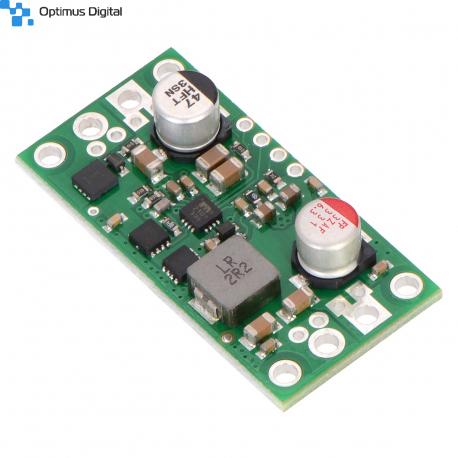 View larger
View larger
Pololu 5V, 6A Step-Down Voltage Regulator D24V60F5
0104110000051929
New product
This synchronous switching step-down (or buck) regulator takes an input voltage of up to 38 V and efficiently reduces it to 5 V with an available output current of around 6 A. Typical efficiencies of 80% to 95% make this regulator well suited for higher-power applications like powering motors or servos, while high efficiencies are maintained at light loads by dynamically changing the switching frequency, and an optional shutdown pin enables a low-power state with a current draw of a few hundred microamps. The regulator’s output voltage setting can also be lowered by adding an external resistor.
See description for more details about the product.
Add to cart now!
This product is no longer in stock
- Write a review
- Remove this product from my favorite's list.
- Add this product to my list of favorites.
More info
Overview
These high-current step-down (buck) regulators generate a fixed 5 V output from input voltages up to 38 V. They are switching regulators (also called switched-mode power supplies (SMPS) or DC-to-DC converters) and have a typical efficiency between 80% to 95%. The available output current is a function of the input voltage and efficiency (see the Typical Efficiency and Output Current section below), but the output current can typically be as high as 6 A.
A very similar version of this regulator is available with a typical maximum output current of 9 A. The two versions of the board are difficult to tell apart visually, so the bottom silkscreen includes a blank space where you can add your own distinguishing marks or labels. You should not use the colors of the printing on the tall, cylindrical electrolytic capacitors to differentiate the two versions as these colors are subject to change. We also carry two much smaller versions of this regulator, one with a typical maximum output current of 2.5 A and one with a typical maximum output current of 5 A.
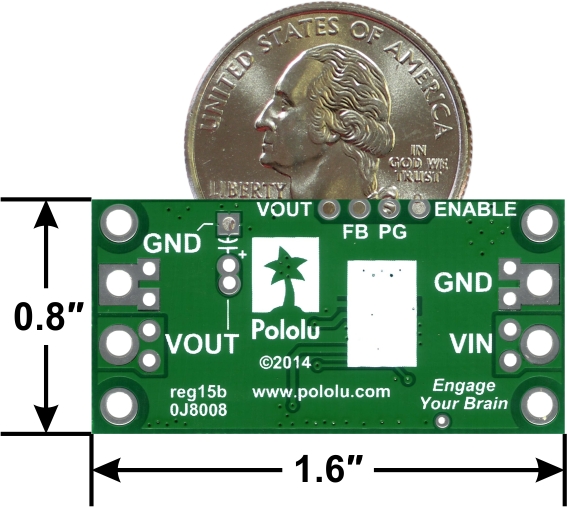
The ENABLE pin can be used to put the board in a low-power state that reduces the quiescent current to approximately 10 µA to 20 µA per volt on VIN, and a PG (power good) indicator makes it easy to monitor the state of the main power for your system. The regulator’s output voltage setting can also be lowered by adding an external resistor.
This regulator has built-in reverse-voltage protection, short-circuit protection, thermal shutdown (which typically activates at 160°C), a soft-start feature that reduces inrush current, and an under-voltage lockout that causes the regulator to turn off when the input voltage is below 4.2 V (typical).
Features
• Input voltage: 5 to 38 V (see below for more details on the regulator’s dropout voltage, which affects the low end of the operating range)
• Fixed 5 V output (with 4% accuracy); this can be lowered by adding an external resistor between FB and VOUT
• Typical maximum continuous output current between 3 A and 6.5 A
• Integrated reverse-voltage protection, over-current and short-circuit protection, over-temperature shutoff, soft-start, and under-voltage lockout
• Typical efficiency of 80% to 95%, depending on input voltage and load; the switching frequency automatically changes at light loads to maintain high efficiencies
• 800 μA typical no-load quiescent current; can be reduced to 10 µA to 20 µA per volt on VIN by disabling the board
• "Power good" output indicates when the regulator cannot maintain its set output voltage
• Compact size: 1.6" x 0.8" x 0.3" (40.6 x 20.3 x 7.6 mm)
• Four 0.086″ mounting holes for #2 or M2 screws
• Smaller holes for 0.1" header pins and larger holes for terminal blocks offer several options for connecting to the board
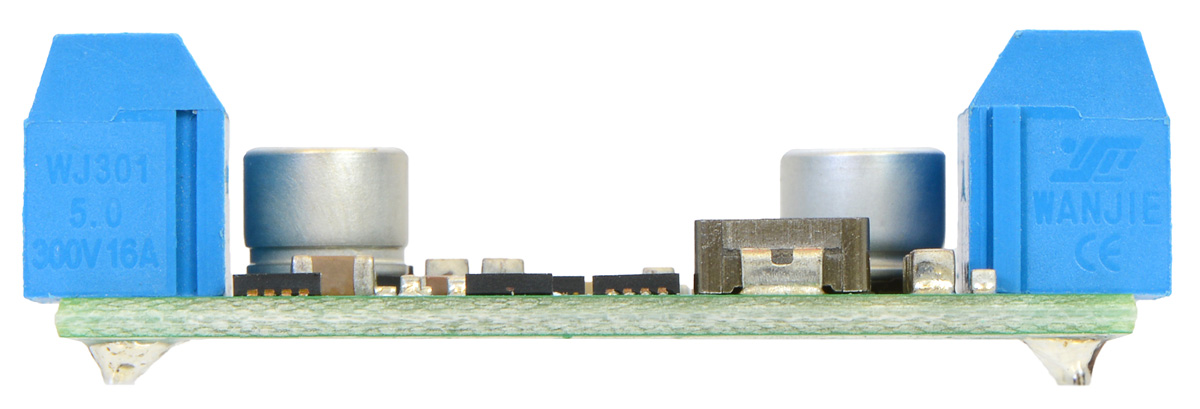
Pololu 5V, 6A Step-Down Voltage Regulator D24V60F5, side view.
Using the regulator
Connections
This buck regulator has six connections: input voltage (VIN), ground (GND), output voltage (VOUT), feedback (FB), ENABLE, and power good (PG).
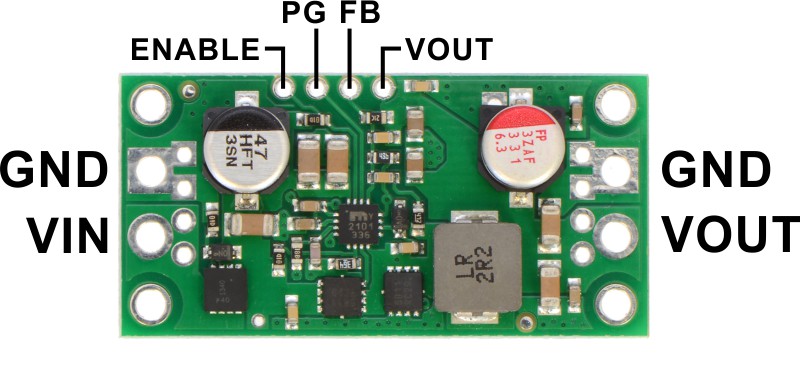
The input voltage, VIN, powers the regulator and can be supplied with voltages up to 38V. The effective lower limit of VIN is VOUT plus the regulator’s dropout voltage, which varies approximately linearly with the load from around 500 mV to a little over a volt (see below for a graph of the dropout voltage as a function of the load).
The output voltage, VOUT, is set to 5V by default. The output voltage can optionally be lowered by adding a resistor between the FB pin and VOUT as detailed in the Decreasing the output voltage section below.
The regulator is enabled by default: a 100 kΩ pull-up resistor on the board connects the ENABLE pin to reverse-protected VIN. The ENABLE pin can be driven low (under 0.6 V) to put the board into a low-power state. The quiescent current draw in this sleep mode is dominated by the current in the pull-up resistor from ENABLE to VIN and by the reverse-voltage protection circuit, which will draw between 10 µA and 20 µA per volt on VIN when ENABLE is held low. If you do not need this feature, you should leave the ENABLE pin disconnected.
The "power good" indicator, PG, is an open-drain output that goes low when the regulator’s output voltage falls below 90% of what it is set to (i.e. 4.5 V with the default 5 V output setting). An external pull-up resistor is required to use this pin.
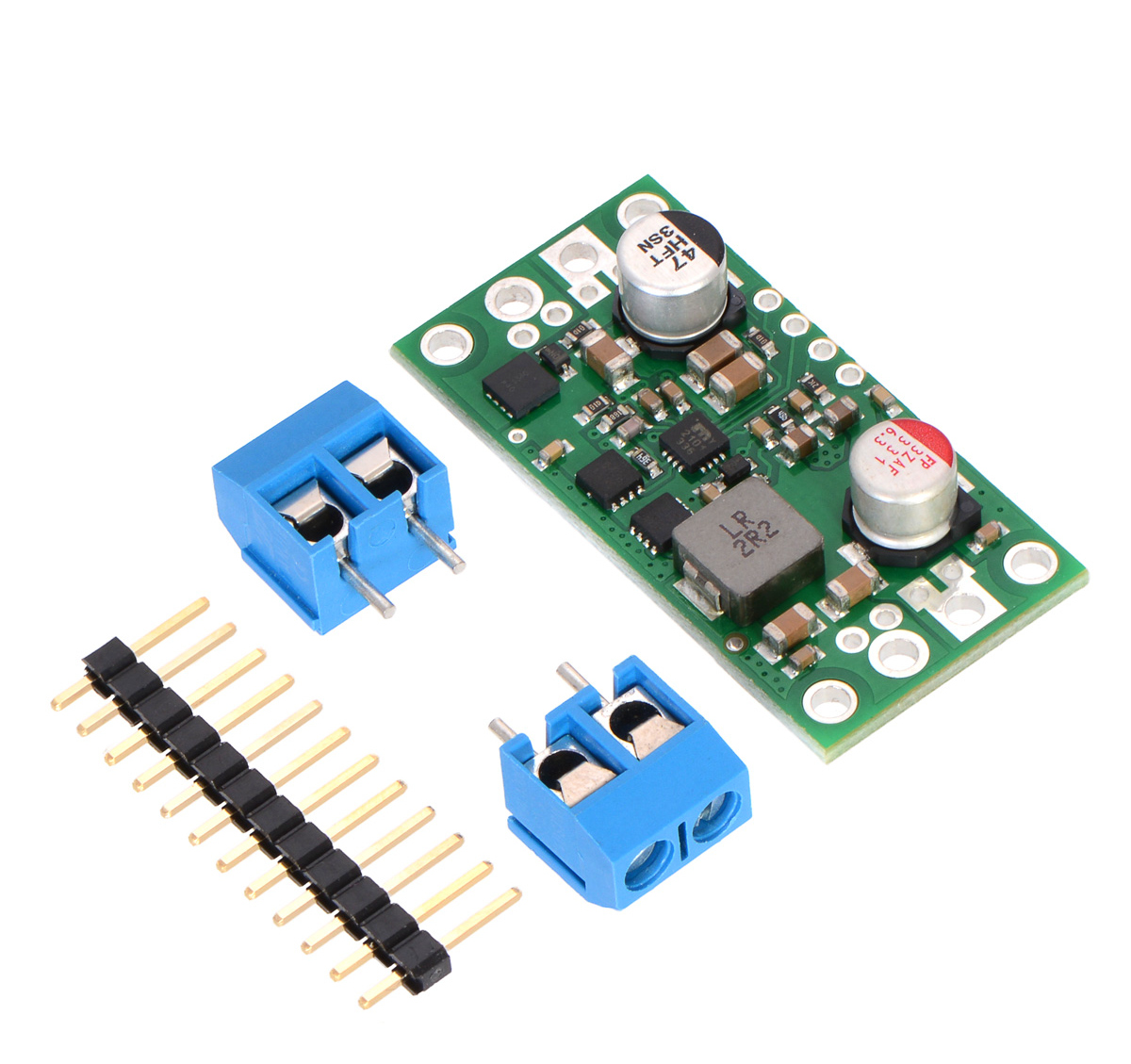
Pololu 5V, 6A Step-Down Voltage Regulator D24V60F5 with included hardware.
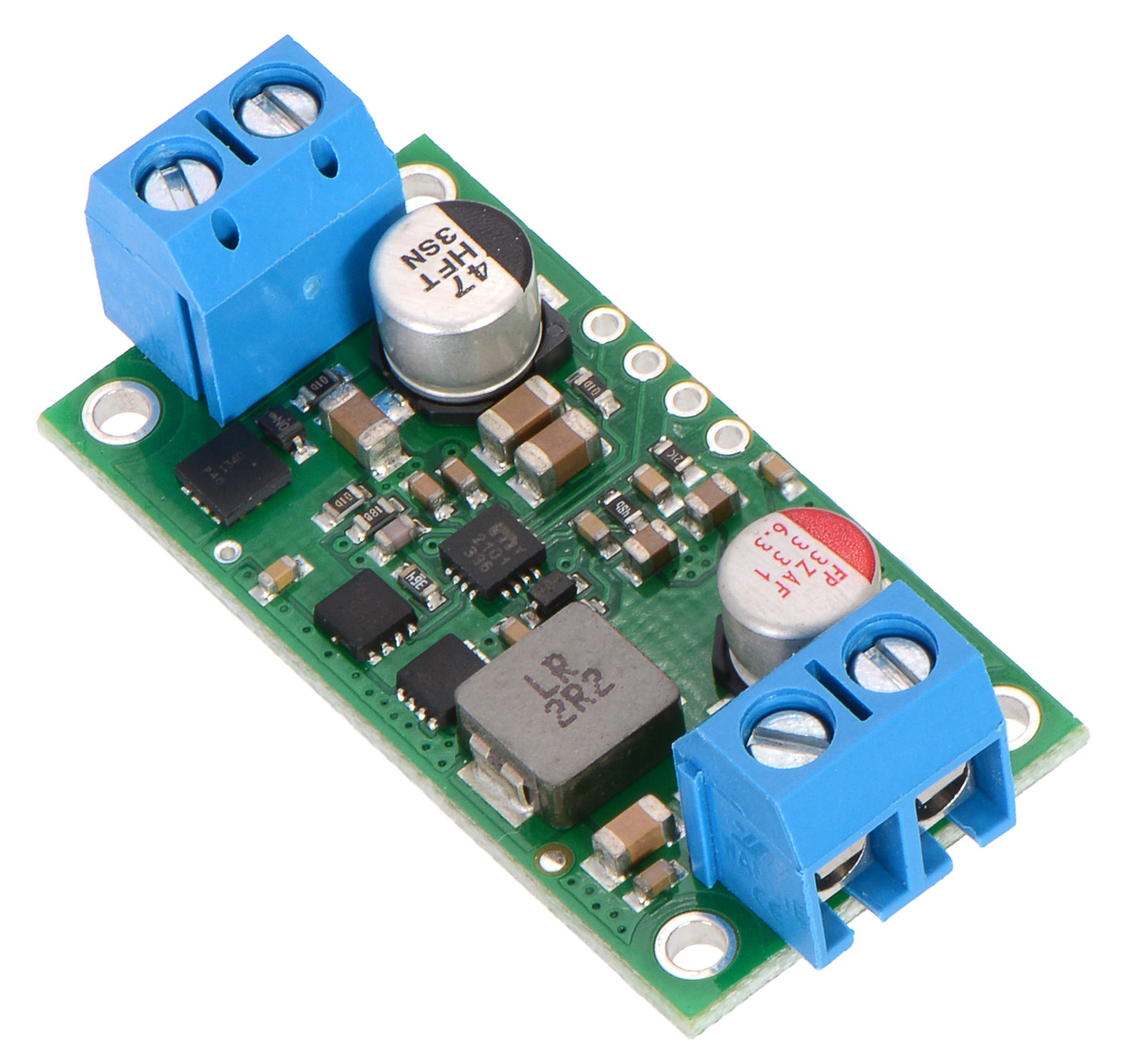
Pololu 5V, 6A Step-Down Voltage Regulator D24V60F5, assembled with included terminal blocks.
The connections are labeled on the back side of the PCB, and the board offers several options for making electrical connections. The eight smaller through-holes on the ends of the board are arranged with a 0.1" spacing for compatibility with solderless breadboards, connectors, and other prototyping arrangements that use a 0.1" grid; you can solder pieces of 12x1 straight male header strip into these smaller holes. Alternatively, you can solder the 2-pin 5mm-pitch terminal blocks to the two pairs of larger holes on the ends of the board. For the most compact installation, you can solder wires directly to the board.
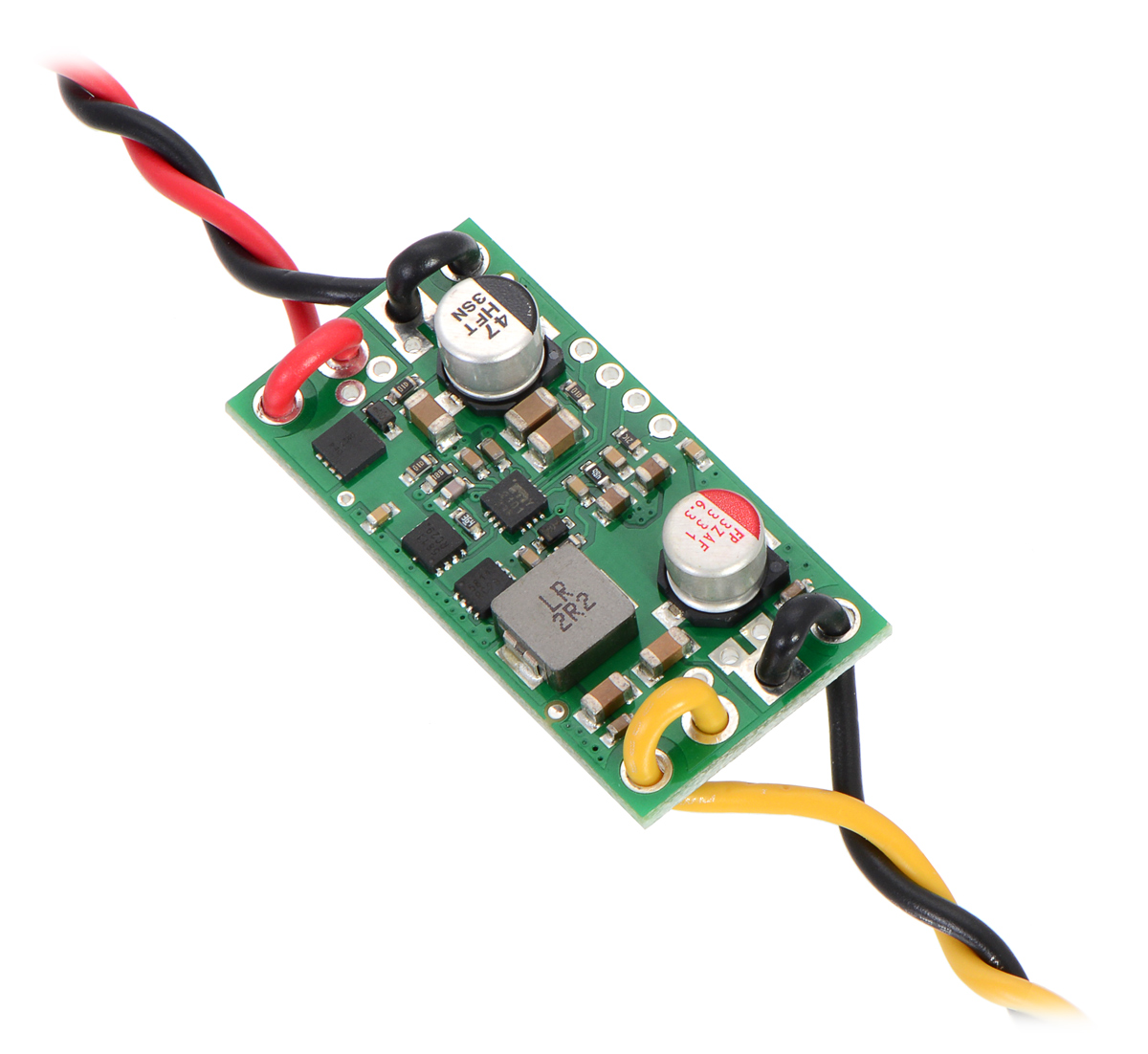
The board has four 0.086" mounting holes intended for #2 or M2 screws. The mounting holes are in the four corners of the board and are separated by 1.4" horizontally and 0.6″ vertically. In applications where mounting screws are not used and wires are soldered directly to the board, the insulated part of the wires can be passed through the mounting holes for strain relief. The picture above shows an example of this with 20 AWG wire, which was close to the limit of what would fit through the mounting holes.
Decreasing the output voltage
The set voltage can optionally be decreased by adding an external resistor between the FB and the neighboring VOUT pin. The equations below show how the output voltage relates to the value of an external resistor, R:
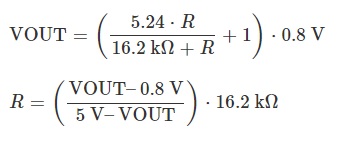
For example, to get an output voltage of 3.3 V, you could put a 23.7 kΩ resistor between FB and VOUT.
The minimum VOUT for this regulator is 0.8 V. Please note that the small VOUT pin next to FB is not intended to source much current; its purpose is to provide a convenient spot for connecting a voltage-adjustment resistor.
Typical efficiency and output current
The efficiency of a voltage regulator, defined as (Power out)/(Power in), is an important measure of its performance, especially when battery life or heat are concerns. As shown in the graph below, these switching regulators have an efficiency of 80% to 95% for most combinations of input voltage, and load.
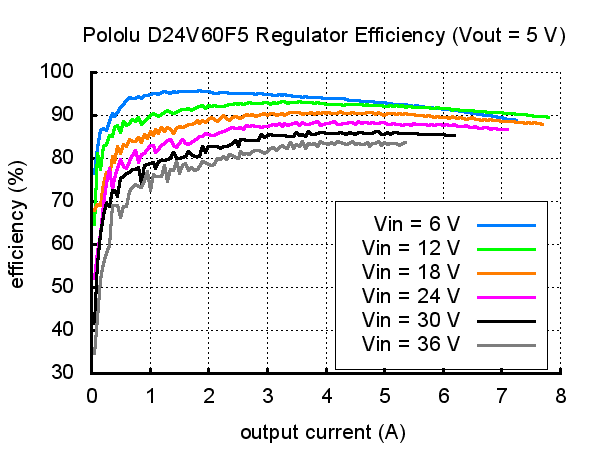
The maximum achievable output current of the board depends on many factors, including the ambient temperature, air flow, heat sinking, and the input and output voltage. The graph below shows the maximum continuous output current this regulator can deliver with no external heat sinking or added air flow.
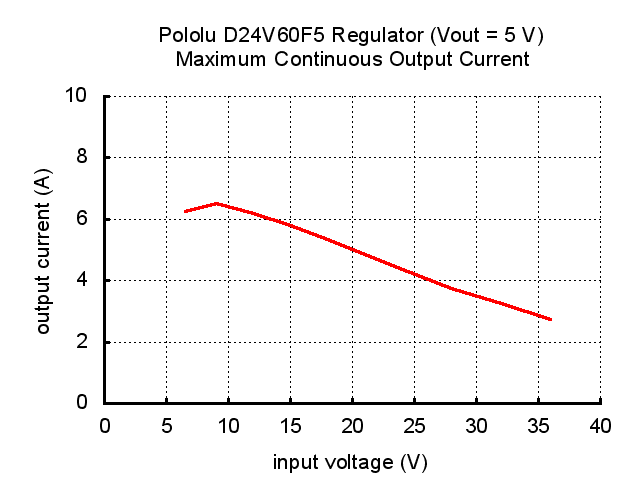
During normal operation, this product can get hot enough to burn you. Take care when handling this product or other components connected to it.
Typical dropout voltage
The dropout voltage of a step-down regulator is the minimum amount by which the input voltage must exceed the regulator’s target output voltage in order to ensure the target output can be achieved. For example, if a 5 V regulator has a 1 V dropout voltage, the input must be at least 6 V to ensure the output is the full 5 V. The following graph shows the dropout voltage for the D24V60F5 regulator as a function of the output current:
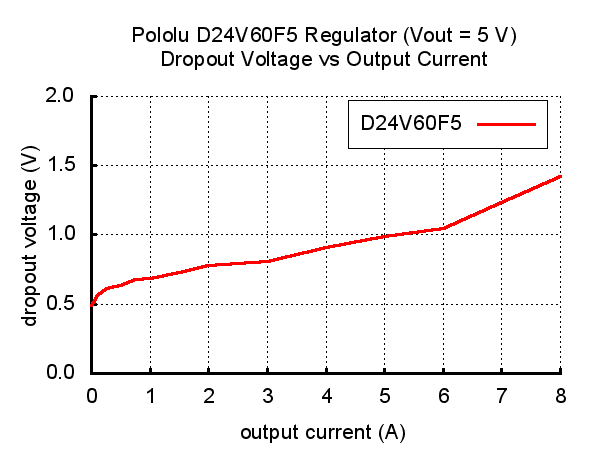
Switching frequency and behavior under light loads
The regulator generally operates at a switching frequency of around 470 kHz, but the frequency drops when encountering a light load to improve efficiency. This could make it harder to filter out noise on the output caused by switching. This also causes small variations in the output voltage like those shown in the graph below:
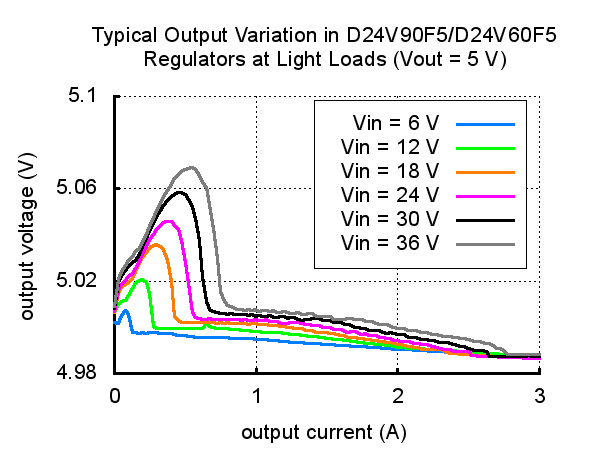
Specifications
Dimensions
| Size: | 1.6" x 0.8" x 0.3"1 |
| Weight: | 4.8 g1 |
General specifications
| Minimum operating voltage: | 5 V |
| Maximum operating voltage: | 38 V |
| Continuous output current: | 6 A2 |
| Output voltage: | 5 V |
| Reverse voltage protection?: | Y |
| Maximum quiescent current: | 15 mA3 |
Notes:
1 Without included hardware.
2 Typical. Actual continuous output current limited by thermal dissipation.
3 Typical worst case (i.e. with VIN close to 5V). Quiescent current depends on the input and output voltages and is much lower for most of the input voltage range (typically below 1 mA). The ENABLE pin can be used to reduce the quiescent current to a few hundred microamps.
Don't delay, buy today.
Add to cart now!
Reviews
Customers who bought this product also bought:
-
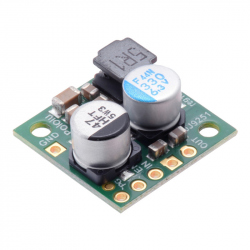
Pololu 3.3V,...
This small synchronous switching step-down (or...
$33.36
-
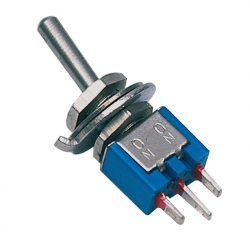
Two Position...
Two Position Switch See description for more...
$0.48
-
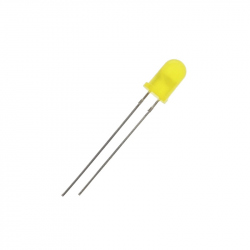
3 mm Yellow...
These 3 mm yellow LEDs are great for your new...
$0.09
-
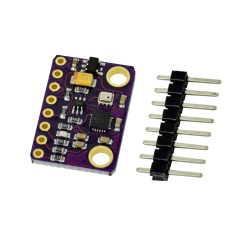
MPU9250 and...
MPU9250 and BMP280 10DOF has 4 sensors which...
$13.20
-
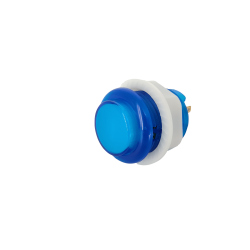
Arcade...
This 24 mm arcade button red LED is ideal for...
$1.11
-
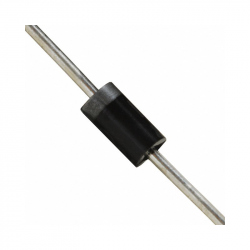
Diode 1N4001
Diode 1N4001 See description for more details...
$0.12
-
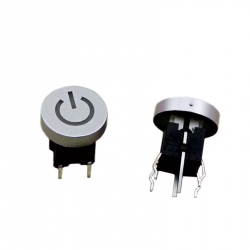
Power Button...
Power Button with White LED See description...
$1.86
-
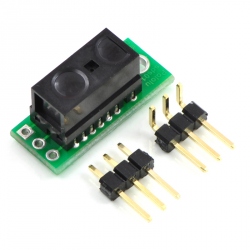
Sensor...
This small digital distance sensor detects...
$12.00
-

Power Button...
Power Button with Blue LED See description for...
$1.86
-

Arcade...
This 24 mm arcade button red LED is ideal for...
$2.40








